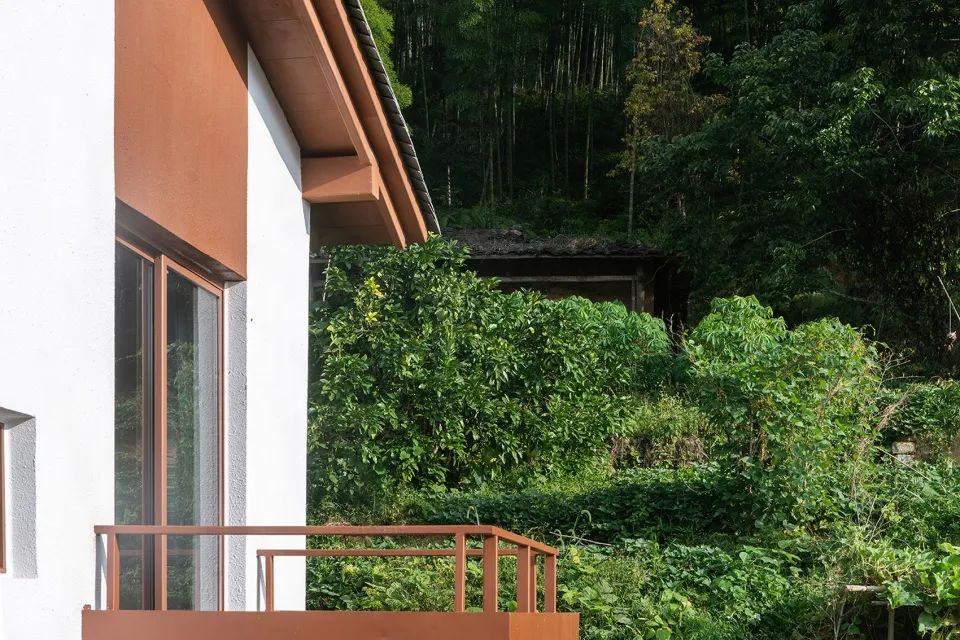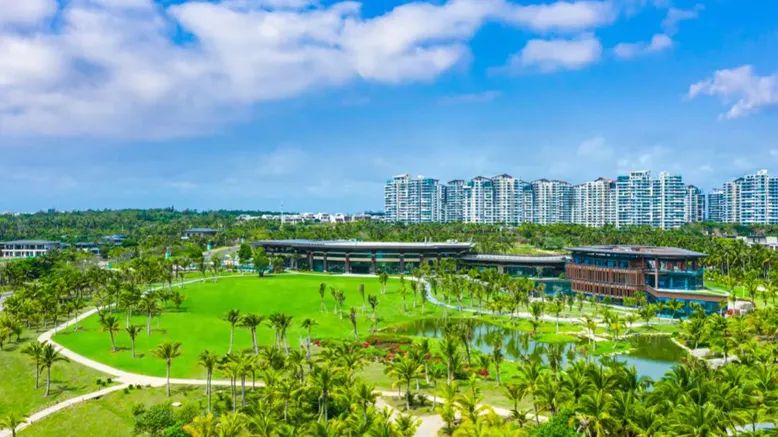Zhao Yilong thanks Xiamen pan Hua · response architecture studio for sharing the location of good
. 
The base is located in Dingrong village, the northernmost mountain village in Quanzhou, deep in the Daiyun mountains
. 
The village is famous for its Ginkgo biloba
. 
27 300 year old Ginkgo biloba trees dot the front and back of the village
. 
In late autumn and early winter, golden Ginkgo biloba trees dot the whole village The broad-leaved forest and the ancient dwellings in Southern Fujian constitute a unique rural style
. 
The bamboo forests all around the ancient village seem to protect this ancient pure land
. 
Due to its special geographical location and inconvenient transportation, it has not been disturbed by outsiders for hundreds of years, and has been able to retain its original natural style
. 
Zhao Yilong’s impression of driving from the city to the town, and then along the narrow village road to the village
. 
The car stops beside the lush ginkgo trees, and the view is blocked by big trees
. 
It’s early summer, and it’s not the Yellow season of Ginkgo leaves
. 
It’s climbing up along the stone steps full of weeds, and the dilapidated two-story wooden house in the weeds is the project The old house to be rebuilt is a typical “Sanhe courtyard” style in Southern Fujian
. 
Outside the courtyard, a gingko tree with a history of more than 300 years is guarding the old house
. 
There are some burnt incense, gold paper and candles in the hall
. 
The owners follow the tradition of the south
. 
During the Lunar New Year and Qingming Festival, they will come back from the city to worship their ancestors and pay New Year’s respects, adding some traces of human activities to this dilapidated old house
. 
Close to the east side of the main house, there is a firewood room and a latrine
. 
Further east, there is a bamboo forest
. 
A path under the bamboo forest is winding to connect the external village road
. 
The volume of the two-story wooden structure residence is higher than that of the original firewood house, respstudio hall, and the wing rooms on both sides are low
. 
The doors and windows of the small rooms and kitchens of the old house can be closed, which is relatively dark
. 
The rest of the halls and corridors are open to the outside, bright and ventilated
. 
Ancient trees, yards, verandahs, steps and distant mountains constitute the pictures of each place of the old house
. 
Walking in these pictures is like walking in a small village
. 
The construction of the old house is a combination of beam lifting and bucket type
. 
The roof truss of the middle hall is a complete and exquisite place in the house
. 
The beam and column structure is clear, and the rest of the house is obviously dilapidated
. 
Through the transformation of the first B & B in Gingko village, we can arouse the vitality of the village, promote the tourism card of “gingko village” further, let more people pay attention to the ancient village and the ancient gingko tree, and boost the Rural Revitalization
. 
2
. 
For the owner of the house, this dilapidated old house is the spiritual belonging of their family, hoping to retain the memory of “main house”
. 
The village is designed as a mountainous terrain
. 
The local dwellings are built on the mountain
. 
For hundreds of years, the villagers have chosen the suitable site to build, and the buildings are derived from the site
. 
The project site is long and narrow from east to west, high in the South and low in the north
. 
The layout of the design continues the texture of the village
. 
The main house and ancillary buildings expand along the east-west direction of the land, and the original broken place is restored
.
The architectural style is integrated into the village, and the quantification of the building body is zero, which is better integrated with the surrounding environment
.
Project overview} Zhao Yilong} Shuiting space} Zhao Yilong’s “ancient trees, distant mountains and courtyard” has become the main clue of the design
.
The conversion and penetration of internal and external space are used to respond to the limited land use
.
Five HOS are concentrated in the main house, and the way to the teahouse, dining room, kitchen and bathroom needs to go through the outdoor
.
This practice continues the way of the old house, resulting in some “inconvenient” back and forth to the countryside The difference with the city forms some “wandering” alleys
.
The multi-directional switch between alleyways and ancient trees, buildings, water surface and bamboo enlarges the experience path, enlarges the space effect and enriches the place
.
It’s like walking in a small village and continuing the space experience of an old house
.
The “wandering” space} Zhao Yilong} water court space and broad vision} the murmur of water under Zhao Yilong’s ancient trees brings vitality to the space
.
Walking on the water, you can walk into the lobby
.
As the space core of B & B, after opening the glass door to the distant mountain, the mirror water sets off the blue sky
.
The new roof truss, the ancient roof truss, the water surface and the distant mountain form a space-time shuttle image
.
The ancient village of Zhao Yilong is located at a high altitude, with inconvenient transportation and ecological and primitive construction methods
.
The pebble in the mountain stream is picked up as the wall base, and the wood is used to build the roof truss
.
The wall is made of double-sided bamboo and rattan bonded with raw soil plaster, and the roof is covered with small green tiles
.
In response to local construction elements, the design uses bamboo railings, bamboo ceiling, green tile roof, plaster exterior wall and other building materials, and uses steel structure to deduce wood structure
.
The owner of the House hopes to continue the memory of the old house, and the design proposes to retain the roof truss of the middle hall, so that the dialogue between “new” and “old” can form the effect of “house in house, house in house”, which brings great difficulties to the construction As a trace of history, the old roof truss has been protected since then
.
As an element of the interior space of the lobby bar, it has become a historical narrator and a link between the present and the past
.
It is the spiritual space of the project
.
In the future, it can also be used as a rural exhibition hall and a rural Museum
.
The project is limited by funds, so there are many difficulties in the construction process
.
The road behind the house can not be driven in
.
Then the road is widened due to the construction needs, and the cost of construction measures exceeds the budget, which also affects the construction funds
.
At the same time, due to the addition of other factors, the cost of construction is also affected The kitchen and toilet are two new single buildings, and the original toilet is reconstructed
.
The kitchen in the original design scheme is also changed to the outdoor open-air dining area, and the original firewood room is transformed into a dining room
.
The second floor of the lobby} Zhao Yilong} details of the lobby} Zhao Yilong} perspective of the ancient ginkgo tree: as a narrow land, the view of the building revolves around the ancient trees
.
The courtyard door of B & B is located under the branches of ancient trees
.
You need to bend your head to avoid the branches to open the door
.
It is the first time for people to touch the ancient trees
.
As a leisure tea room, the design deliberately lowers the height of the window, squatting tea can see the ancient trees and their reflection on the water
.
In the alley, the exterior walls of the main hall and the teahouse are surrounded by a vertical frame, which shows the ancient trees and the water
.
The viewing platform is the best perspective to see the whole body of ancient trees
.
Zhao Yilong’s view of distant mountain: due to the site and orientation, the teahouse turns to the East, so that the main house can have a wide horizontal view of distant mountain
.
The viewing platform also gives way to the North retaining wall of the site, and is parallel to the distant mountain
.
The view of Zhao Yilong’s bamboo forest: the balcony of the guest room facing east on the second floor can look over the ridge to the bamboo forest
.
On the second floor of the restaurant, the bamboo forest is entered into the restaurant by a large glass window frame, which becomes the background of the restaurant
.
Walking in the lane, bamboo leaves rustle in the wind, making the space more quiet
.
The bamboo forest outside the dining room on the second floor} Zhao Yilong} the horizontal viewfinder} Zhao Yilong’s largest guest room is equipped with a leap floor space, and the high space faces the ancient trees, forming a dialogue between people and ancient trees, inside and outside
.
The balcony of guest rooms on the west side of the second floor is close to the field path on the terrace, creating a “handshake balcony” to shake hands with passing farmers
.
The East guest room is facing the bamboo forest
.
The bamboo forest blocks but does not block
.
When the wind blows, the bamboo leaves swish.
.



